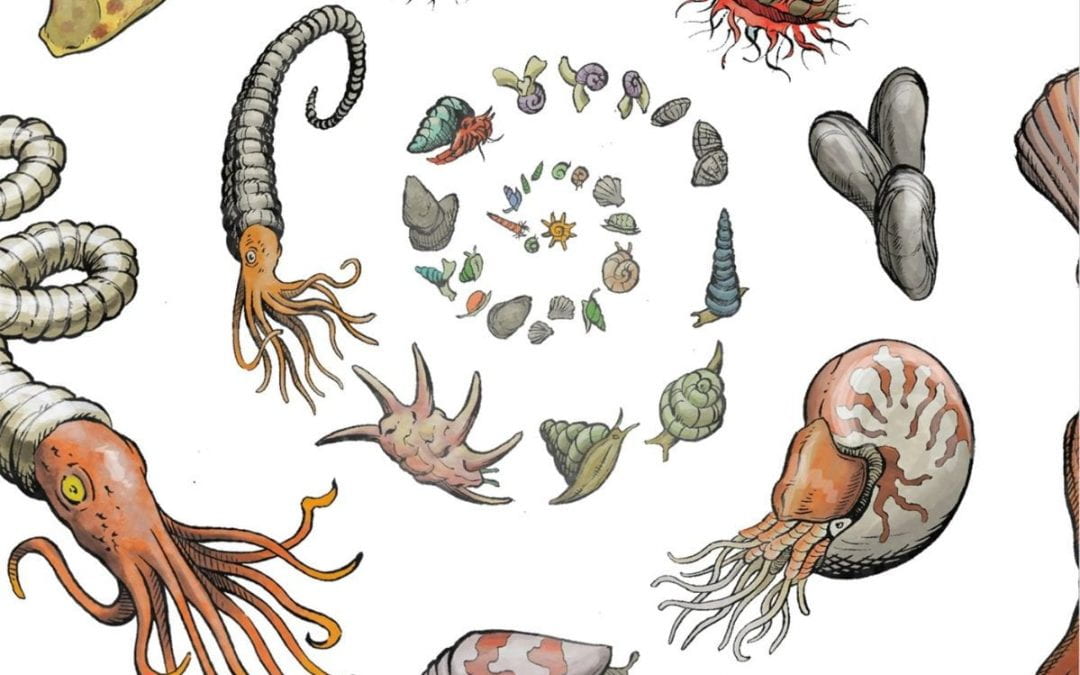July 2020 Museum Reads pick –
Spirals in Time: The Secret Life and Curious Afterlife of Seashells by Helen Scales
Learn more about this new feature here.
Seashells, stretching from the deep past into the present day, are touchstones leading into fascinating realms of the natural world and cutting-edge science. In Spirals in Time: The Secret Life and Curious Afterlife of Seashells, marine biologist Helen Scales shows how seashells have been sculpted by the fundamental rules of mathematics and evolution; how they gave us color, gems, food, and new medicines.
Members of the phylum Mollusca are among the most ancient animals on the planet. Their shells provide homes for other animals, and across the ages, people have used shells not only as trinkets but also as a form of money, and as powerful symbols of sex and death, prestige and war.
The science and natural history of shells are woven into a compelling narrative, revealing their cultural importance and the ways they have been used by humans over the millennia, even as a source of mind-bending drugs. After surviving multiple mass extinctions millions of years ago, mollusks and their shells still face an onslaught of anthropocentric challenges, including climate change and corrosive oceans. But rather than dwelling on all that is lost, Scales emphasizes that seashells offer an accessible way to reconnect people with nature, helping to bridge the gap between ourselves and the living world. Spirals in Time shows why nature matters, and reveals the hidden wonders that you can hold in the palm of your hand.
Why Spirals in Time?
There are a few reasons we picked Scales‘ Spirals of Time: The Secret Life and Curious Afterlife of Seashells for this month’s Museum Reads book. Shells go hand-in-hand with hot, sunny days of summer as people flock to the beach. (If there wasn’t a pandemic going on, of course…) Another inspiration is the Museum’s own mollusk collection. It includes thousands of shells from around the world.
There are many mollusk specimens that don’t take up much space in the collection. In fact, some of them are among the smallest materials in the entire museum.
On the opposite end of the spectrum, we house a giant clam – the largest clam and bivalve in the world.
But the book itself is a fascinating read for those wanting to learn more about mollusks. It’s engaging and includes a well-balanced selection of stories from the author’s research and work. The book provides surprising insights into these sometimes unassuming creatures. What’s especially great about Scales book, though, is her exploration of mollusk and human interactions, from shells used as currency throughout history to the more recent TRY Oyster Women’s Association initiative that works to tackle the joint challenges of unemployment and coastal degradation by empowering oyster harvesters and educating them about sustainable harvesting and the delicate mangrove ecosystem. There’s even a chapter about humankind’s longstanding desire for collecting shells!





